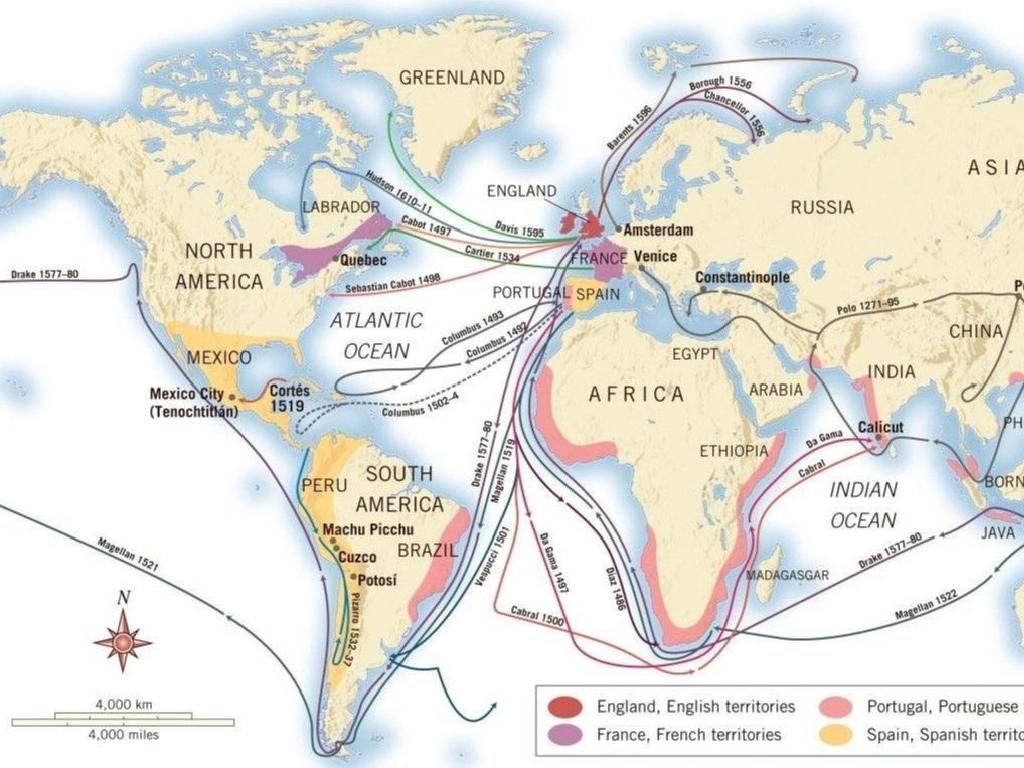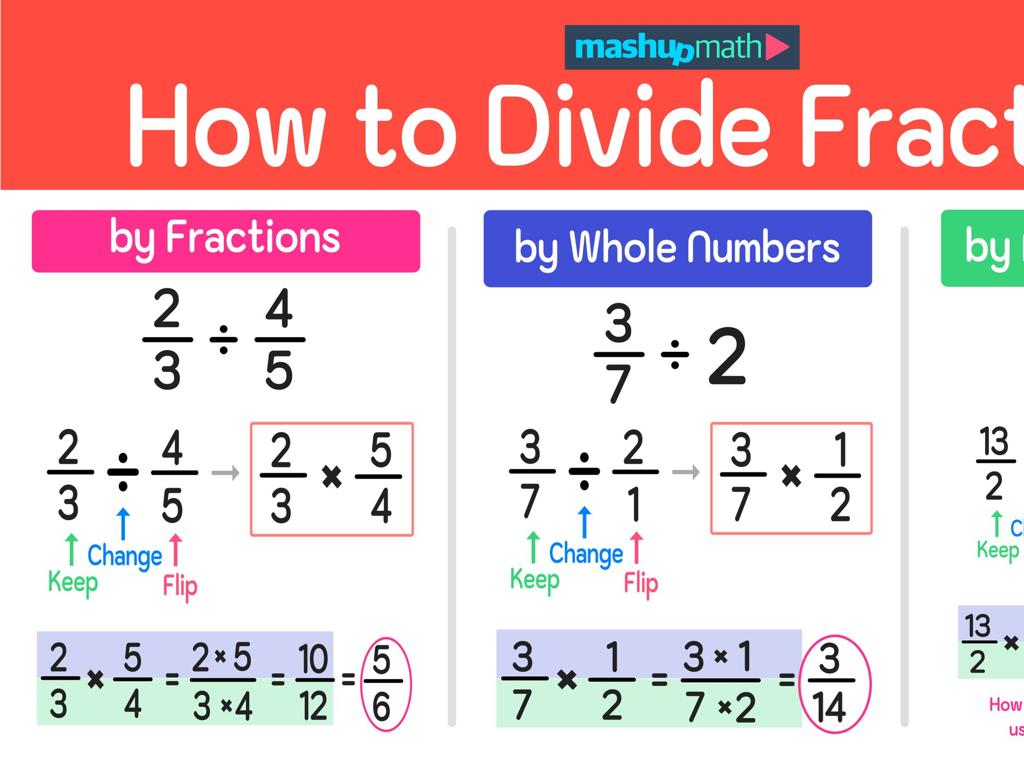French And English Expeditions: Part I
Subject: Social studies
Grade: Seventh grade
Topic: Age Of Exploration
Please LOG IN to download the presentation. Access is available to registered users only.
View More Content
Exploring the Age of Exploration: French and English Expeditions
– Unveil the Age of Exploration
– A period marked by global maritime exploration
– Motives behind grand expeditions
– Seeking wealth, land, and trade routes
– Focus: French & English voyages
– Learn about key explorers and their journeys
– Significance of these expeditions
– How these expeditions shaped the modern world
|
This slide introduces students to the Age of Exploration, setting the stage for understanding the historical context and significance of French and English expeditions. Begin by explaining the era as a time when European powers were eager to explore unknown territories to expand their wealth and influence. Discuss the various motives, such as the search for new trade routes, the desire for gold and spices, and the spread of religion. Highlight today’s focus on French and English expeditions, mentioning figures like Jacques Cartier and Sir Francis Drake. Emphasize the lasting impact these voyages had on the world, including the colonization of new lands, the exchange of goods and ideas, and the alteration of native societies. Encourage students to think critically about the consequences of these explorations, both positive and negative.
Motivations for Exploration: The Three G’s
– Explorers sought Gold, God, and Glory
– Wealth, spreading Christianity, and national prestige were key motives.
– Economic and religious incentives
– Desire for trade routes and to spread faith.
– Competition among European powers
– Nations vied for dominance through discovery and colonization.
– Advances in navigation and shipbuilding
– Innovations like the compass and caravel made long voyages possible.
|
This slide delves into the primary motivations behind the French and English expeditions during the Age of Exploration. The three G’s Gold, God, and Glory summarize the complex interplay of economic, religious, and competitive factors that drove nations to explore. Economic interests included the search for new trade routes and wealth, while religious motives were tied to the spread of Christianity. National pride and the competition for global dominance also played a significant role. Advancements in navigation, such as the magnetic compass, and shipbuilding, like the development of the caravel, enabled explorers to undertake longer and more daring voyages. Discuss how these motivations were interconnected and how they influenced the actions and goals of explorers during this era.
French Expeditions: Pioneers of the New World
– Jacques Cartier’s voyages
– First European to map the Gulf of St. Lawrence and the shores of the Saint Lawrence River.
– Champlain’s role in exploration
– Founded Quebec, first permanent French settlement in North America.
– St. Lawrence River significance
– Served as a gateway for French exploration and trade with Indigenous peoples.
– New France and the fur trade
– New France became a hub for lucrative fur trade, shaping economic and cultural exchanges.
|
This slide introduces students to the key figures and events of French expeditions during the Age of Exploration. Jacques Cartier’s voyages led to the mapping of significant parts of Canada, laying the groundwork for future exploration. Samuel de Champlain furthered this exploration by establishing Quebec, which became the cornerstone of French colonial presence in North America. The St. Lawrence River was crucial for travel and trade, becoming a lifeline for the settlers and a route for fur trade, which was a major economic driver of the time. The establishment of New France marked the beginning of a new era of European influence in the Americas. Encourage students to consider the long-term impacts of these expeditions on the indigenous populations and the shaping of modern Canada.
English Expeditions: Pioneers of the New World
– John Cabot’s voyages
– First European since Vikings to reach North American mainland
– Sir Francis Drake’s achievements
– First Englishman to circumnavigate the globe, challenged Spanish dominance
– Quest for the Northwest Passage
– A sea route through North America to Asia, highly sought after for trade
– English claims and Spanish conflicts
– England’s territorial claims led to tensions and confrontations with Spain
|
This slide introduces students to the key figures of English expeditions during the Age of Exploration, focusing on John Cabot and Sir Francis Drake. Cabot’s voyages marked the beginning of English exploration in the New World, while Drake’s circumnavigation and privateering activities challenged Spanish sea power. The search for the Northwest Passage was a major motivation for English explorers, as it promised a shorter route to Asia for trade. The resulting English claims in North America often led to conflicts with Spain, which had its own territorial ambitions in the region. Encourage students to consider the motivations behind these expeditions and the impact they had on the relationship between European powers.
Impact on Indigenous Peoples: First Encounters
– Initial interactions with Europeans
– Meetings between natives and explorers, often leading to trade or conflict
– Colonization’s impact on natives
– European settlement led to drastic native population changes due to disease and conflict
– New goods and fur trade beginnings
– Introduction of items like guns, metal tools, and the fur trade altered native economies
– Cultural and economic effects
– Exchange of ideas and customs, but also exploitation and loss of native traditions
|
This slide aims to shed light on the profound effects that French and English expeditions had on indigenous populations during the Age of Exploration. The first encounters between European explorers and native peoples often involved trade and cultural exchanges but also led to conflict. The subsequent colonization had a devastating impact on indigenous populations, primarily through the spread of diseases to which natives had no immunity, and violent confrontations. The introduction of European goods significantly changed indigenous ways of life, especially with the start of the fur trade, which became a major economic activity. However, this also led to the exploitation of native peoples and resources. It’s crucial to discuss the cultural implications, including the loss of native traditions and the forced assimilation into European customs. Encourage students to think critically about these historical events and their long-term consequences.
Comparing French & English Expeditions
– Goals & outcomes of expeditions
– Both sought new trade routes & resources, but had different interactions with indigenous peoples.
– Long-term colonization effects
– French traded furs, English created settlements; both had lasting cultural impacts.
– Explorers’ legacies
– Consider how Cartier’s and Cabot’s voyages influenced modern Canada and the U.S.
– Interactive class discussion
– Prepare to debate the merits and consequences of each country’s exploration efforts.
|
This slide aims to compare the French and English expeditions during the Age of Exploration. Discuss the similarities and differences in their goals, such as seeking new trade routes and wealth. Highlight how the French were more involved in the fur trade and had cooperative relations with Native Americans, while the English were more focused on establishing colonies. Discuss the long-term effects of colonization, including cultural and political impacts on North America. Engage students in an interactive discussion about the legacies of explorers like Jacques Cartier and John Cabot, encouraging them to think critically about the positive and negative outcomes of these expeditions. The interactive discussion should be a debate format, allowing students to express their views and understand different perspectives on historical events.
Class Activity: Expedition Simulation
– Form exploration teams
– Assign team roles
– Roles: navigator plots course, trader manages goods, diplomat handles interactions, historian records events
– Develop an expedition plan
– Plan should include route, trade goals, and interaction strategies
– Present plan to the class
|
This activity is designed to engage students in the Age of Exploration by simulating an expedition. Divide the class into small groups, each acting as a team of explorers. Each member should choose a role that was crucial during expeditions: navigator, trader, diplomat, or historian. The navigator will decide the route, the trader will determine which goods to exchange, the diplomat will plan how to interact with encountered civilizations, and the historian will document the journey. Each group will then present their expedition plan to the class, explaining the reasoning behind their decisions. For the teacher: prepare a list of potential challenges they might face, such as storms or negotiations, to discuss after presentations.






